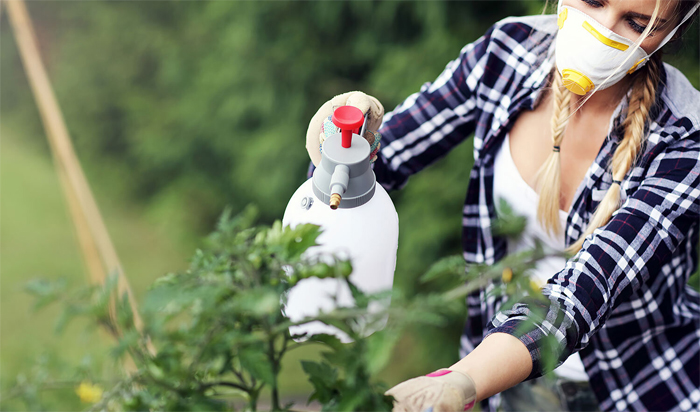Imidacloprid was first synthesized as an insecticide ingredient in 1985. It is currently one of the most widely used and most popular active ingredients in the world. Similar to pyrethroids, which have been introduced in our previous blog, they are all synthetic insecticides. It belongs to a group of chemicals called neonicotinoids. Imidacloprid is an inhalant insecticide that acts as a neurotoxin to insects. The term neonicotinoid includes nicotine, meaning that they are chemically modelled on nicotine. Nicotine is a potent neurotoxin found naturally in tobacco. Imidacloprid is chemically similar to nicotine and is therefore toxic to insects.
Imidacloprid can be used in a variety of ways, including pest control and protection of crops and vegetation. Imidacloprid targets flies, ants, cockroaches, bedbugs, termites and other common pests. Imidacloprid can also be used in soil, seeds, and leaves to control pests who live on sucking juice from plants such as whiteflies, aphids, thrips, soil insects, turf insects, and some beetles. Imidacloprid can be used in agriculture, residential and commercial buildings, tree conservation, pets, gardening and wood preservation. In addition, imidacloprid has the characteristics of non-volatilization, low toxicity to mammals and rapid decomposition after use. These characteristics make imidacloprid one of the top insecticide ingredients on the market.

How Imidacloprid Works
Imidacloprid works similarly to nicotine which is commonly found in tobacco. Imidacloprid interferes with the transmission of stimuli in the nervous system when ingested or inhaled by the target insects, thus blocking the insects’ neural pathways. So, imidacloprid has the ability to shut down the nervous system functions of the target insects. This blockage will cause the accumulation of acetylcholine in the insects’ body. The accumulation of acetylcholine will gradually lead to paralysis and eventual death of the insects. Imidacloprid has a delayed effect on the target insects. After the ingesting or inhaling of the ingredient, the insect’s feeding activity will cease within a few hours while death occurs within about 1-2 days. For termites with trophallaxis behavior, this characteristic will be more conducive to the spread of the ingredients in the whole colony.
Advantages and Disadvantages of Imidacloprid
Imidacloprid is a systematic insecticide. In practical applications, imidacloprid can be used to produce both liquid insecticides and liquid gels. So, it has a wide range of applications. It can be applied to a variety of indoor and outdoor environments. For outdoor use, imidacloprid is suitable for dealing with pest problems on trees, lawns and plants. After used, imidacloprid will be absorbed by the plant from the soil or leaves and will be quickly spread throughout the plant. Pests will die from ingesting the imidacloprid ingredient when they chew on plant leaves or suck its juice. When applied indoors, it is ideal for killing common pests such as cockroaches, ants and bedbugs in the form of gel baits.
One disadvantage of imidacloprid is that targeted pests can develop resistance to this active ingredient if it is used for long period of time. Of course, you can reduce the likelihood of the pests’ resistance by frequently using it in combination with other types of insecticide products.

Safety Considerations
The good news for safety is that imidacloprid is far more toxic to insects and other invertebrates than it is to mammals. Imidacloprid will not go through human skin easily, but if ingested, this ingredient can penetrate the stomach wall or intestines. If poisoned in humans, symptoms such as weakness, cramps, or fatigue may occur. Experiments on rats have shown that despite ingestion, more than 90% of the dose will be excreted within 24 hours. For protection, users should wear gloves and protective clothing when using insecticide products containing imidacloprid and follow the attached instructions.
Safe-killer always considers the effectiveness and safe application of insecticides during product development and strives for the best balance between the two. We continue to focus on the safe use of insecticides, especially in the selection of indoor insecticides.



